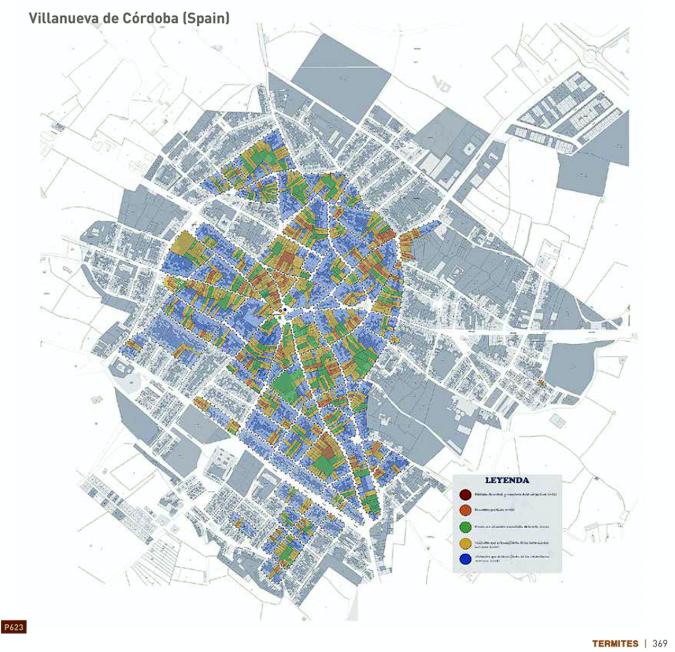Review by Thomas Chouvenc
When you see someone passionate about a topic, it can humble you. Especially if this topic happens to be the one that you are also passionate about. Let me explain.
Recently, 660 Photographs of Termites and Their Control, by David Mora del Poso, was released, and I was fortunate enough to receive a physical copy of it. As I opened the book and gently flipped through the pages, my mind was immediately blown away by its beauty, its inherent poesy, and its deep dive into termite biology and complexity.

One thing that will be quickly apparent to you is that this book is not your usual lengthy textbook about the biology of a given bug. It is instead a fascinating compilation of photos that David took over decades during his time addressing termite pest problems around the world. Each picture published in this book tells us a fantastic story about the biology of termites, their inherent beauty, and their abilities. However, the storytelling is not performed through a dry academic approach; instead, it immerses you within live termite colonies using remarkable macro shots. It also opens your eyes to the rather difficult relationships that termite societies and human societies sometimes have.

For a 425-page book that weighs a little bit more than 2 kg, it sure is a heavyweight. However, the 400 first pages are a compilation of (amazing) pictures with reference numbers. On the last 25 pages, you will find a text corresponding to each of the 660 images found in the first 400 pages providing an explanation of what you see. The text is provided both in English and Spanish, which is a remarkable effort from David to reach a wider audience, as his proficiency in English is limited.
As you open the book randomly, you will be glued to the first page you see, then flip back and forth, until you realize you just spent 15 minutes doing so. This book does this to you. In the process, you are immersed in the biology of various termite species, primarily with infamous pest species within Coptotermes, Reticulitermes, Cryptotermes, Nasutitermes, Heterotermes, and a few other genera that David encountered during his work.

Macro shots will take you through the journey of the molting process of a worker, the complexity of the hatching process from an egg, the wing bud development and sclerotization of an alate, the transformation of a pre-soldier. Wider shots will show you the incredible complexity of nest structures, the intensity of swarming events, and the potential damage termites can do to structures and precious historical human artifacts.

This book also provides a unique insight into the world of termite control – not always the most visible or respected in the world of academia. With $40+ billion in yearly damage worldwide, termites are usually unaccepted in someone’s house, which is an attitude you cannot ignore as a termite researcher. The impact of termites on people is beautifully portrayed in David’s book. It reflects what can happen if some of the termite pest species interact with human societies.
David has spent more than 25 years dealing with termite pest problems around the world, and he has been instrumental in accomplishing something that no one else has accomplished. Since the advent of Chitin Synthesis Inhibitor Baits for subterranean termite pest species in 1995, there has been a fundamental change in the philosophy for termite control around the world. Instead of spraying a large amount of pesticides around structures and hoping for the best, baits now aim at eliminating the whole colony after termites feed on a ridiculously small amount of a termite-specific formulated baits. Beyond this cultural shift, area-wide baiting programs were proposed to create large termite-free zones. Such programs have been implemented in various places around the world, with mixed results, primarily because of logistical difficulties that are inherent to cultural hurdles of human political landscapes. The problem is often not the termite pest – it is how people are handling them and how conflicts of interest may defeat the attempt.

David is an exception. He successfully implemented a city-wide termite control program in several cities across Spain. Some of these cities have not seen termite damage since their implementation. This is quite remarkable, but what is even more impressive is that David documented the extensive implementation of these programs and provided a large chunk of these data in his book. Yes, there is a section that is dedicated to how he implemented area-wide termite control. To be honest, the work he documented leaves an amazing roadmap of how termite control should be done, with the utmost respect for the environment.

David Mora Del Pozo may not be well known from social insect research groups. Yet, with this book, David is leaving a unique legacy to inspire many future budding entomologists. On top of this, 660 Photographs of Termites and their Control has all the attributes you need for a proper display on a coffee table or as an entomo-gift for the holidays.

More about 660 Photographs of Termites and their Control at http://phototermes.com/.


